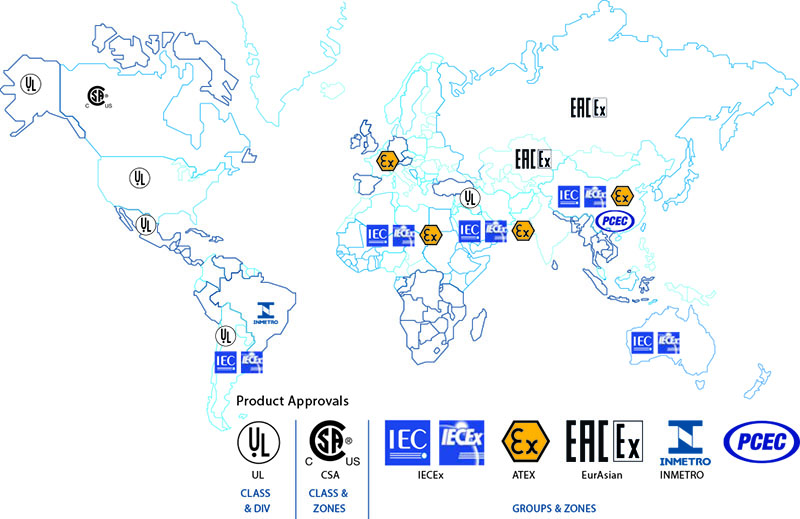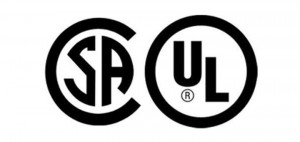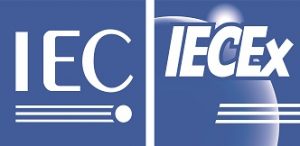Here we present the different standards in force in the world and what this means for products used in hazardous areas. Below is a map that illustrates the standards generally used in the different parts

Since July 1, 2003, electrical equipment used in potentially explosive atmospheres within the European Union must comply with this directive and follow the ATEX standard.
This directive sets out "essential requirements" for safety manufacturers and requires a classification of devices into groups and categories, distinguishing between gas and dust.

This directive requires users to implement a number of measures to ensure the safety of workers, including: (No explosion risk assessment on their website
Classification of different risk and signaling areas
Maintaining a document on explosion protection
The implementation of technical and organizational measures to prevent
Comply with the electrical appliance selection criteria in the table below:

This document must be issued by the supplier for each order of product intended to be installed in a hazardous area. It must indicate that the equipment supplied complies with the most recent harmonized standard.
The US and Canadian standards are the only ones that have different classifications and locations. ATEX & IECEx use groups and zones while the NEC & CEC work by classes and divisions. There is no direct comparison between the two. This means that it is imperative not to interchange the two standards in a given area.

p>The National Institute of Metrology, Standardization and Industrial Quality (INMETRO) is the government body responsible for implementing measurement, safety and quality standards for electrical and electronic products. It directs the activities of accreditation, inspection, testing and certification bodies that issue certificates in Brazil.

IECEx issues an international certificate of conformity for products used in a hazardous area.
This system provides a unique certification of conformity which requires manufacturers to successfully:
product evaluation tests attesting to their conformity to a standard with full test report
monitoring of the continuous monitoring of the manufacturer's quality assurance system
an accelerated process for countries where regulations continue to require the issuance of national Ex certificates or approvals.
This certification system is on its way to becoming globally adopted by all known standards around the world but countries are all working to different timelines.

The EurAsian conformity mark follows similar rules to IECEx regarding zone ventilation and other criteria.
The Eurasian Conformity Mark is the standard of the customs union that includes the Russian Federation, Kazakhstan, Belarus and Armenia.
Products placed on the Chinese market must be certified in accordance with current national regulations.
PCEC is accredited by CNAS (Chinal National Accreditation Service for Conformity Assessment) for product testing and issuing certificates of conformity for products used in hazardous areas.
Electrical equipment intended for use in potentially explosive atmospheres must comply with the main certification standards: IEC, CENELEC and NEC.
IEC (International Electronic Commission) standards are accepted in almost all countries. They are identical to the European CENELEC standards.
The NEC (National Electrical Code) is the standard in the United States. Its 1996 edition, art. 505, uses the IEC designations for gas groups, equipment temperature classes and zone definitions.
check_circle
check_circle